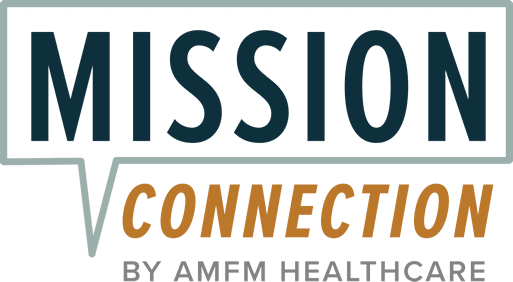Excessive Guilt & Shame in Adults: Causes, Effects, and Recovery

Guilt and shame are emotions that can, in small doses, be motivators toward healing relationships and strengthening empathy. They can help us recognize when we’ve hurt someone, crossed a boundary, or fallen short of our values.
But, when guilt and shame become excessive, they move away from being moral compasses and instead distort how we see ourselves, limiting our ability to connect with others. Understanding the difference between guilt and shame can help us recognize what might be a healthy mechanism and what is instead toxic.
If excessive guilt and shame are affecting your ability to lead a full, satisfying life, a mental health professional can help you overcome these issues and rebuild self-esteem. This article can also be a useful guide to understanding excessive guilt and shame in adults, as it explores:
- The differences between guilt and shame in adults
- Common causes of guilt and shame
- Symptoms of guilt and shame, and the effects they can have on mental health
- Therapy for overcoming guilt and shame
- Answers to commonly asked questions about guilt and shame in adults

Understanding Guilt vs. Shame in Adults
Learning to distinguish guilt and shame — and understanding where they come from — can help us build emotional resilience and self-compassion.
What Is Guilt?
Guilt is often related to the actions and choices we make, like saying something hurtful or neglecting a responsibility, and it can motivate us to make amends. Guilt tends to be based on our behaviors, as we might think, I did something bad. In this sense, guilt can, at times, be a healthy function, helping us take responsibility for our behavior and repair relationships.
What Is Shame?
Unlike guilt, which can bring about repair and connection, shame tends to push us toward isolation. It can drive us to tell ourselves things like, If others really knew me, they’d leave. This is why shame is often linked with depression, anxiety, and trauma-related disorders.1
When we recognize the difference between guilt and shame, we can start to respond differently to our mistakes. Understanding the causes of these often intense feelings can also help.
The Causes of Excessive Guilt and Shame
Everyone experiences guilt or shame at some point in life — they’re a normal part of being human. But when these emotions are disproportionate or excessive, this often means they point back to deeper roots in a person’s upbringing, life experiences, or mental health. The following are some of the common causes of excessive guilt and shame:
Childhood Experiences and Upbringing
Guilt and shame often start early in life. As children, we naturally look to our parents and caregivers to define what’s “good” or “bad.” We may also begin to equate mistakes with being unworthy of love when the guidance of our caregivers is delivered through harsh criticism.2
Over time, this belief can develop into internalized shame — an ongoing sense that love or safety must be earned. For instance, if you grew up in these types of environments, you might find yourself:
Apologizing too much or taking responsibility for others’ emotions- Struggling with perfectionism, people-pleasing behavior, or fear of disappointing others
- Feeling that you don’t deserve rest, success, or joy
Even parents who mean well can unintentionally reinforce guilt through high expectations or inconsistent affection. When these patterns persist long after childhood, they can continue to shape your adult relationships and self-image.
Pressures From Religion, Culture, or Society
Many of us carry guilt or shame that doesn’t come from our personal actions, but instead from the messages we get through our cultures and communities. Some beliefs emphasize sacrifice or self-denial, which can lead us to interpret normal human needs, like rest and the desire to do things for our own pleasure, as selfish or wrong.
At the same time, societal norms about success, body image, gender, or sexuality can make us feel defective. For example, as a parent, you might feel ashamed for needing help instead of doing it all alone. Or if you’re raised in a strict religious environment, you may carry guilt around sexuality or identity.
When we don’t have any ways to challenge these messages, they can become internal rules that fuel self-blame and prevent authentic self-expression.
Trauma and Abuse
Traumatic experiences, whether emotional, physical, or sexual, can create deep and enduring shame.3 Survivors often blame themselves for what happened, especially when abusers manipulate them into believing they “deserved” the harm.
Unfortunately, this self-blame can reinforce shame and keep people trapped in silence. Many trauma survivors also experience what therapists call “toxic shame” – a belief that they are fundamentally broken or damaged.4
These patterns are used by the mind and body as a survival strategy to make sense of overwhelming experiences.
Symptoms of Chronic Guilt and Shame
Chronic guilt and shame often influence how you think, feel, and connect with others – gradually eroding confidence, motivation, and joy.
The following are some of the symptoms you might experience with chronic guilt and shame.
Emotional and Behavioral Signs
Persistent guilt and shame may show up as:
- Constant self-criticism or self-blame
- Avoiding emotions by doing things like suppressing anger, sadness, or vulnerability
- Isolating or withdrawing from relationships
These reactions often reflect struggles with emotional regulation and shame, which is the inability to calm or comfort yourself after perceived mistakes. Instead of keeping us accountable, they reinforce anxiety and disconnection.
Effects on the Body and Mind
The link between mental health and guilt is well-documented. When guilt becomes chronic, the body remains on high alert, activating the same stress responses seen in trauma and anxiety. Over time, this can lead to:
- Fatigue, headaches, or muscle tension5
- Restlessness, insomnia, or overthinking
- Symptoms of anxiety, depression, or low self-esteem6
Guilt and Shame in Relationships
Excessive guilt can cause us to constantly give more than we have, while shame may fuel avoidance and fear of rejection. Both patterns can strain relationships and could potentially lead to loneliness or burnout.
Recognizing these patterns is the first step toward change. With therapy and self-compassion, you can learn healthier ways to regulate emotions, release guilt, and rebuild trust in yourself and others.
Therapy for Guilt and Shame
Recovering from guilt and shame is not about ignoring the past; it’s about learning healthier ways to relate to yourself. With the right tools, it’s possible to quiet self-criticism, build emotional resilience, and reconnect with a sense of self-worth.
Treatment focuses on coping with guilt and shame by combining evidence-based therapy, mindfulness, and compassionate awareness.
Behavioral Therapy For Guilt
Cognitive and behavioral therapies can help people identify the negative thought loops that sustain self-blame. Through behavioral therapy for guilt, you’ll learn to challenge distorted beliefs like I don’t deserve to be happy and replace them with balanced, realistic perspectives. This approach also helps people develop shame resilience strategies, which are tools that can strengthen confidence and reduce emotional reactivity in difficult moments.
Eye Movement Desensitization and Reprocessing (EMDR)
EMDR can reprocess painful memories that continue to trigger emotional distress, especially when trauma is part of the guilt or shame. By helping the brain integrate these experiences more adaptively, EMDR could reduce self-blame and support long-term guilt and shame recovery.
Internal Family Systems (IFS) and Parts Work
IFS therapy explores the inner “parts” of the self that can carry guilt, shame, or perfectionism. These parts are often protective, trying to prevent rejection or further harm. Working with them compassionately helps release old survival patterns and fosters healing through internal understanding and forgiveness.
Mindfulness and Self-Compassion Practices
Many people struggling with guilt and shame have never learned how to respond to themselves with kindness. Mindfulness-based approaches teach you to notice painful emotions without judgment, while self-compassion and guilt work can help replace harsh self-criticism with empathy. This shift could improve emotional health and guilt regulation, allowing you to process feelings without being overwhelmed by them.
Somatic and Body-Based Therapies
Guilt and shame often live in the body as tightness, heaviness, or numbness. Somatic approaches, like breathwork, gentle movement, or grounding exercises, could help release these stored emotions. Reconnecting with the body supports regulation and reinforces shame resilience strategies that anchor healing in both mind and body.
Regardless of which approach you choose, guilt and shame recovery begins not with perfection, but with the willingness to care for yourself the way you’ve always deserved.
Mission Connection: Helping Adults Heal from Guilt and Shame
Living with chronic guilt or shame can feel like carrying a weight that never lifts. Even small mistakes may spiral into self-blame or emotional exhaustion, leaving you feeling disconnected from who you truly are. At Mission Connection, we understand that these emotions don’t develop in isolation – they’re often shaped by trauma, family dynamics, or years of trying to meet impossible standards.
Our team believes healing begins with compassion. Using approaches like CBT, EMDR, and trauma-focused therapy, you’ll learn practical shame resilience strategies and tools for coping with guilt and shame that support long-term recovery and authentic living.
If you’re ready to move beyond self-blame and start rebuilding trust in yourself, we’re here to help. Contact Mission Connection today to learn how our compassionate, holistic approach can guide you toward peace, confidence, and emotional freedom.

FAQs About Guilt and Shame in Adults
While we hope that the information on this page helped you better understand guilt and shame in adults, we understand that you may still have some concerns. For this reason, we have provided answers to FAQs about guilt and shame to fully clarify the topic.
1. Can Guilt and Shame Ever Be Healthy?
In small, balanced amounts, guilt can be healthy and help guide moral behavior and strengthen empathy. However, shame is often not healthy as it tends to be related to internal feelings of not being “enough.” Though, of course, we all experience shame at some point or another. But it’s when these emotions become excessive or constant that they begin damaging self-worth and emotional health.
2. How Can I Tell If I’m Struggling With Toxic Guilt or Shame?
Toxic guilt or shame often shows up as relentless self-criticism, perfectionism, or a feeling of being “not good enough” no matter what you do. You may replay mistakes repeatedly or isolate yourself to avoid judgment. If these emotions interfere with daily life, it may be time to seek support for shame-related issues and explore behavioral therapy or trauma-informed care.
3. What’s the Link Between Trauma and Shame?
Trauma often distorts how we view ourselves. For example, survivors may internalize guilt or believe they somehow caused what happened. This misplaced responsibility can create deep-rooted shame that could persist for years. Trauma-focused therapies, such as EMDR, somatic work, and parts-based approaches, can help you reframe these beliefs and promote guilt and shame recovery.
4. Does Mission Connection Offer Treatment for Guilt and Shame?
Yes, using evidence-based approaches like CBT and trauma-focused therapy, we offer support for issues related to shame, whether it’s PTSD, depression, or something else. We focus on helping you reconnect with self-worth, build emotional resilience, and move toward lasting healing.
References
- Bilevicius, E., Single, A., Bristow, L. A., Foot, M., Ellery, M., Keough, M. T., & Johnson, E. A. (2018). Shame mediates the relationship between depression and addictive behaviours. Addictive Behaviors, 82, 94–100. https://doi.org/10.1016/j.addbeh.2018.02.023
- Wojcik, K. D., Cox, D. W., & Kealy, D. (2019). Adverse childhood experiences and shame- and guilt-proneness: Examining the mediating roles of interpersonal problems in a community sample. Child Abuse & Neglect, 98, 104233. https://doi.org/10.1016/j.chiabu.2019.104233
- López‐Castro, T., Saraiya, T., Zumberg‐Smith, K., & Dambreville, N. (2019). Association between Shame and Posttraumatic Stress Disorder: A Meta‐Analysis. Journal of Traumatic Stress, 32(4), 484–495. https://doi.org/10.1002/jts.22411
- WebMD. (n.d.). What is toxic shame? Retrieved October 11, 2025, from https://www.webmd.com/mental-health/what-is-toxic-shame
- Stewart, C. A., Mitchell, D. G., MacDonald, P. A., Pasternak, S. H., Tremblay, P. F., & Finger, E. (2023). The psychophysiology of guilt in healthy adults. Cognitive Affective & Behavioral Neuroscience, 23(4), 1192–1209. https://doi.org/10.3758/s13415-023-01079-3
- Budiarto, Y., & Helmi, A. F. (2021). Shame and self-esteem: A meta-analysis. Europe’s Journal of Psychology, 17(2), 131–145. https://doi.org/10.5964/ejop.2115
